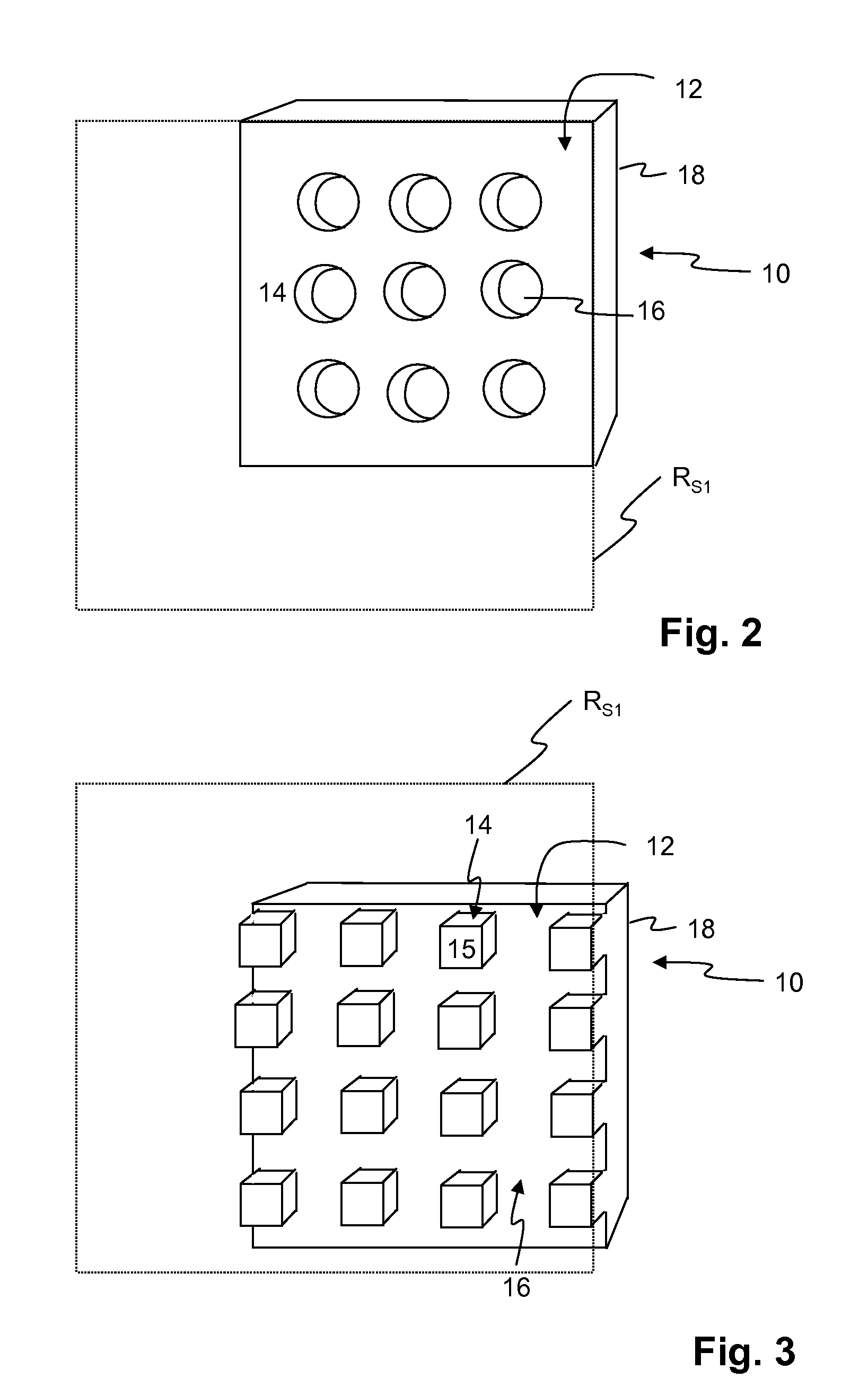Method of producing a wafer scale package
a scale package and wafer technology, applied in the field of manufacturing optical elements, can solve the problems of difficult to establish a well defined thickness, difficult to precisely control the z-position of one optical element, and known wafer package and production process that cannot enable precise control of the z-distance of functional elements
- Summary
- Abstract
- Description
- Claims
- Application Information
AI Technical Summary
Benefits of technology
Problems solved by technology
Method used
Image
Examples
Embodiment Construction
[0059]FIGS. 1a-c show different cross sections of a pre-shaped first substrate 10 in a view perpendicular to the general orientation of the first substrate 10 and to the axial direction z. In all figures, the first substrate 10 has a planar back surface 18 and a structured front surface 12 with at least one recess 16 and at least one non-recess portion 14. The recesses 16 and non-recess portions 14 are an integral part of the substrate 10. The front faces 15 or tips 15′ of the non-recess portions 14 define an abutment plane RS1 that runs parallel to the general orientation of the first substrate (plane of the substrate). The recesses 16 are intended to accommodate the optical elements manufactured by means of replication. The z-direction, i.e. the direction of light propagation in the wafer package to be manufactured is normal to the general orientation of the first substrate and to the abutment plane RS1. Generally, all points of the front surface 12 lie either in the abutment plan...
PUM
| Property | Measurement | Unit |
|---|---|---|
| diameter | aaaaa | aaaaa |
| diameter | aaaaa | aaaaa |
| diameter | aaaaa | aaaaa |
Abstract
Description
Claims
Application Information
 Login to View More
Login to View More - R&D
- Intellectual Property
- Life Sciences
- Materials
- Tech Scout
- Unparalleled Data Quality
- Higher Quality Content
- 60% Fewer Hallucinations
Browse by: Latest US Patents, China's latest patents, Technical Efficacy Thesaurus, Application Domain, Technology Topic, Popular Technical Reports.
© 2025 PatSnap. All rights reserved.Legal|Privacy policy|Modern Slavery Act Transparency Statement|Sitemap|About US| Contact US: help@patsnap.com



